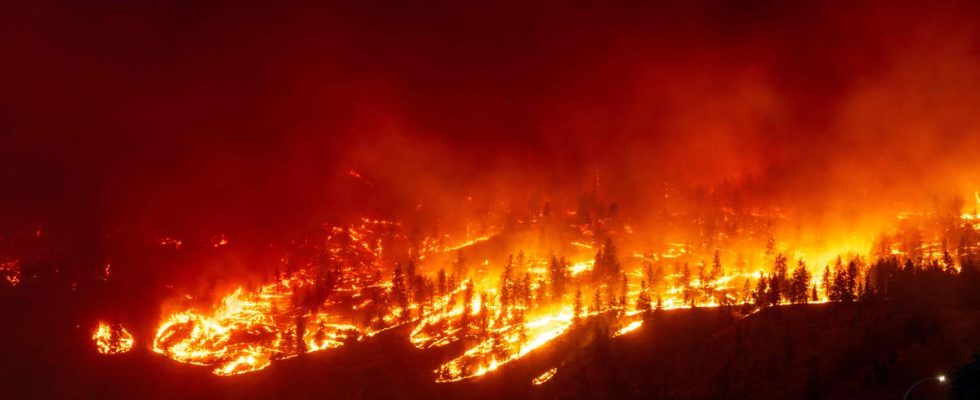Global warming has made extreme weather conditions behind the raging fire season in eastern Canada this year at least seven times more likely, according to a study released Tuesday by a network of scientists specializing in such analyses.
World Weather Attribution (WWA) researchers have determined that climate change, caused by human activity, has increased the likelihood of high temperatures and low humidity levels in particular, which have played a major role in the spread of the blaze.
A number of fires that could grow
Canada is experiencing the most devastating fire season in its history this year. More than 1,000 fires are active from east to west at present. More than 15 million hectares have already burned in total in the country, an area larger than Greece. This is already more than double the previous record recorded over a full fire season – while it is still far from over this year. About 200,000 residents had to be evacuated, and four people died.
“Rising temperatures are creating powder keg-like conditions in forests across Canada and around the world,” said one of the researchers involved in the work, British climatologist Friederike Otto, in a statement. “Until we stop burning fossil fuels, the number of forest fires will continue to increase. »
For their study, 16 WWA researchers focused on fires that occurred between May and July in Quebec, in order to study a homogeneous zone in terms of climate and vegetation. Quantifying the impact of climate change directly on the number of fires or their area is very difficult, they explained, in particular because of the role of other factors, such as the direct cause of a fire starting or the strategies employed. to protect forests. That’s why they focused on the effect of climate change on weather conditions conducive to fires.
“Real blaze”
The researchers studied a measure called the “forest-weather index”, which combines temperature, wind speed, humidity and precipitation, to estimate the risk of forest fires. They then isolated the seven-day period during which the weather conditions were most favorable to fires, between May and July. According to their analysis, these extreme conditions have been made twice as likely to occur due to climate change. The latter also made these conditions 20% more intense, according to the study.
Secondly, the researchers wanted to assess the severity of the weather conditions over the entire past season. For this, they took into account the daily values derived from the same index, from January to July. The likelihood of such fire-favorable conditions occurring over that time has been increased sevenfold by global warming, they determined. They have also been made 50% more intense.

